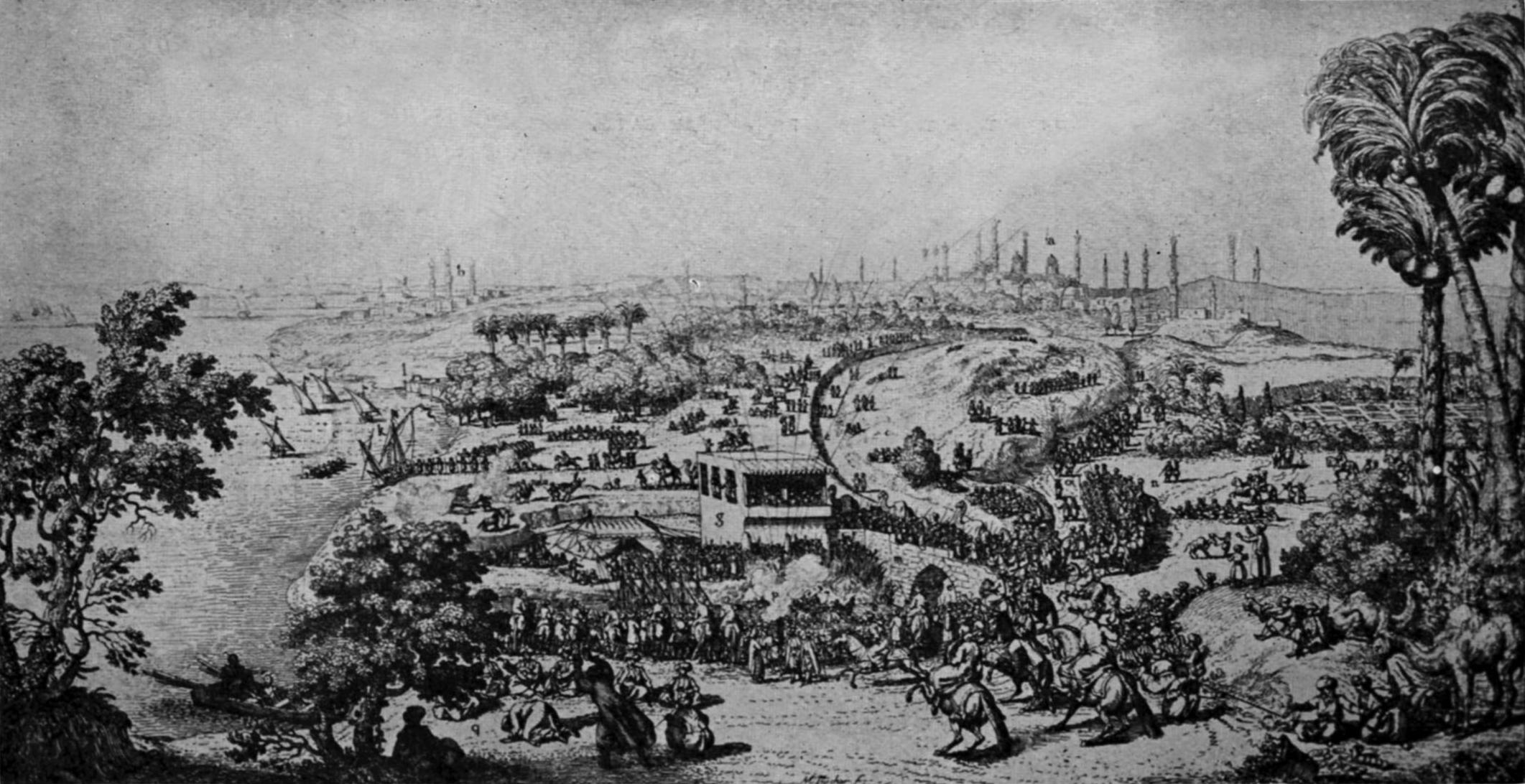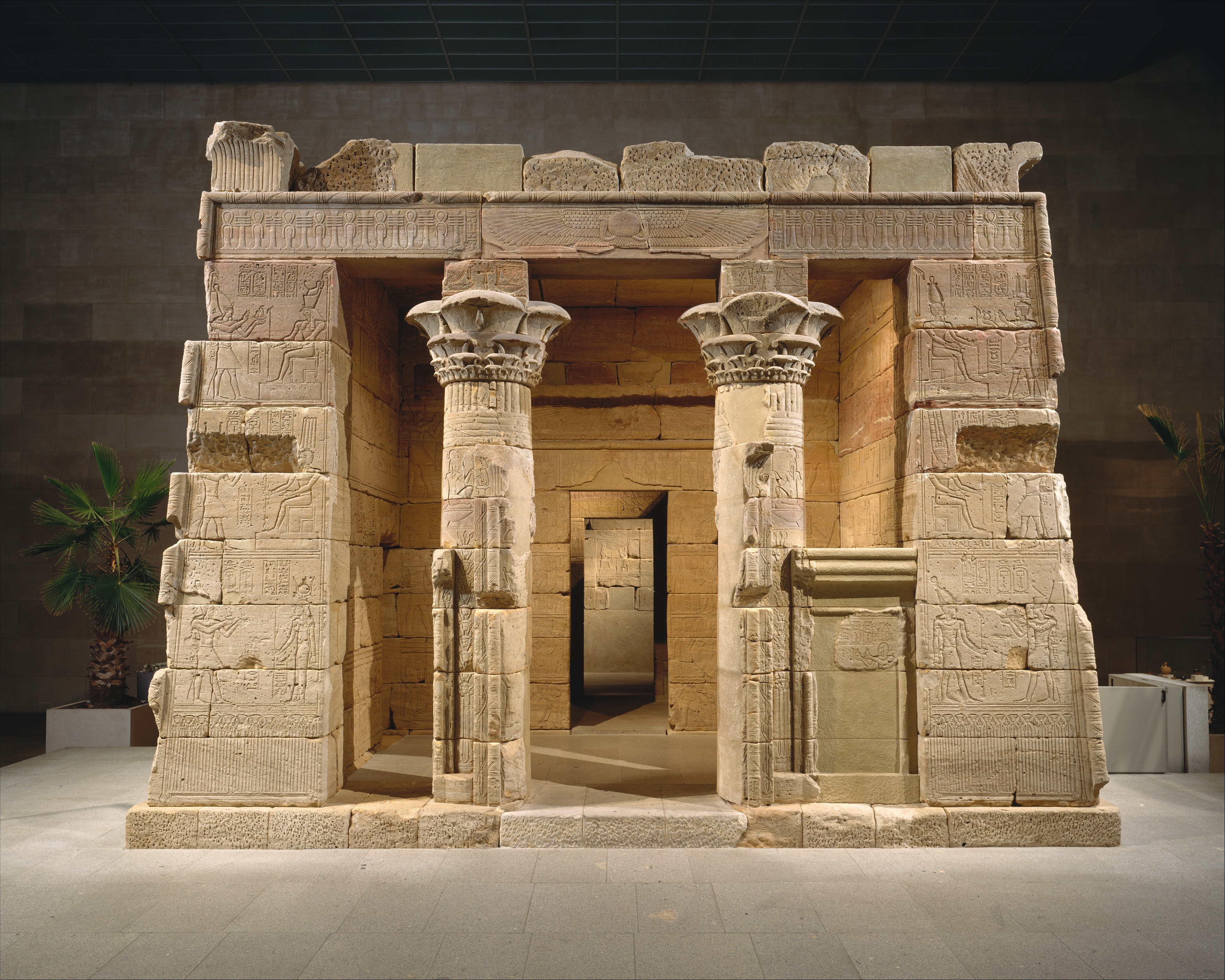|
Ancient Egyptian Pottery
Ancient Egyptian pottery includes all objects of fired clay from ancient Egypt. First and foremost, ceramics served as household wares for the storage, preparation, transport, and consumption of food, drink, and raw materials. Such items include beer and wine mugs and water jugs, but also bread moulds, fire pits, lamps, and stands for holding round vessels, which were all commonly used in the Egyptian household. Other types of pottery served ritual purposes. Ceramics are often found as grave goods. Specialists in ancient Egyptian pottery draw a fundamental distinction between ceramics made of Nile clay and those made of marl clay, based on chemical and mineralogical composition and ceramic properties. Nile clay is the result of eroded material in the Ethiopian mountains, which was transported into Egypt by the Nile. This clay has deposited on the banks of the Nile in Egypt since the Late Pleistocene by the flooding of the Nile. Marl clay is a yellow-white stone which occurs in li ... [...More Info...] [...Related Items...] OR: [Wikipedia] [Google] [Baidu] |
Manfred Bietak
Manfred Bietak (born in Vienna, 6 October 1940) is an Austrian archaeologist.Curriculum Vitae: Manfred Bietak PhD habil PhD h.c. at Academia.edu He is professor of at the , working as the principal investigator for an ERC Advanced Grant Project "The Hyksos Enigma" and editor-in-chief of the journal ''Ägypten und Levante'' (''Egypt and the Levant'') and of four series of the Austrian Academy of Scienc ... [...More Info...] [...Related Items...] OR: [Wikipedia] [Google] [Baidu] |
Iron Oxide
Iron oxides are chemical compounds composed of iron and oxygen. Several iron oxides are recognized. All are black magnetic solids. Often they are non-stoichiometric. Oxyhydroxides are a related class of compounds, perhaps the best known of which is rust. Iron oxides and oxyhydroxides are widespread in nature and play an important role in many geological and biological processes. They are used as iron ores, pigments, catalysts, and in thermite, and occur in hemoglobin. Iron oxides are inexpensive and durable pigments in paints, coatings and colored concretes. Colors commonly available are in the "earthy" end of the yellow/orange/red/brown/black range. When used as a food coloring, it has E number E172. Stoichiometries Iron oxides feature as ferrous ( Fe(II)) or ferric ( Fe(III)) or both. They adopt octahedral or tetrahedral coordination geometry. Only a few oxides are significant at the earth's surface, particularly wüstite, magnetite, and hematite. * Oxides of FeII ... [...More Info...] [...Related Items...] OR: [Wikipedia] [Google] [Baidu] |
Silicon
Silicon is a chemical element with the symbol Si and atomic number 14. It is a hard, brittle crystalline solid with a blue-grey metallic luster, and is a tetravalent metalloid and semiconductor. It is a member of group 14 in the periodic table: carbon is above it; and germanium, tin, lead, and flerovium are below it. It is relatively unreactive. Because of its high chemical affinity for oxygen, it was not until 1823 that Jöns Jakob Berzelius was first able to prepare it and characterize it in pure form. Its oxides form a family of anions known as silicates. Its melting and boiling points of 1414 °C and 3265 °C, respectively, are the second highest among all the metalloids and nonmetals, being surpassed only by boron. Silicon is the eighth most common element in the universe by mass, but very rarely occurs as the pure element in the Earth's crust. It is widely distributed in space in cosmic dusts, planetoids, and planets as various forms of silicon dioxide ( ... [...More Info...] [...Related Items...] OR: [Wikipedia] [Google] [Baidu] |
Nile Flood
The flooding of the Nile has been an important natural cycle in Egypt since ancient times. It is celebrated by Egyptians as an annual holiday for two weeks starting August 15, known as ''Wafaa El-Nil''. It is also celebrated in the Coptic Church by ceremonially throwing a martyr's relic into the river, hence the name, The Martyr's Finger (, ). The flooding of the Nile was poetically described in myth as Isis's tears of sorrow for Osiris when killed by their brother Set. Flooding cycle The flooding of the Nile is the result of the yearly monsoon between May and August causing enormous precipitations on the Ethiopian Highlands whose summits reach heights of up to 4550 m (14,928 ft). Most of this rainwater is taken by the Blue Nile and by the Atbarah River into the Nile, while a less important amount flows through the Sobat and the White Nile into the Nile. During this short period, those rivers contribute up to ninety percent of the water of the Nile and most of the sedime ... [...More Info...] [...Related Items...] OR: [Wikipedia] [Google] [Baidu] |
RPM Ägypten 127
Revolutions per minute (abbreviated rpm, RPM, rev/min, r/min, or with the notation min−1) is a unit of rotational speed or rotational frequency for rotating machines. Standards ISO 80000-3:2019 defines a unit of rotation as the dimensionless unit equal to 1, which it refers to as a revolution, but does not define the revolution as a unit. It defines a unit of rotational frequency equal to s−1. The superseded standard ISO 80000-3:2006 did however state with reference to the unit name 'one', symbol '1', that "The special name revolution, symbol r, for this unit is widely used in specifications on rotating machines." The International System of Units (SI) does not recognize rpm as a unit, and defines the unit of frequency, Hz, as equal to s−1. :\begin 1~&\text &&=& 60~&\text \\ \frac~&\text &&=& 1~&\text \end A corresponding but distinct quantity for describing rotation is angular velocity, for which the SI unit is the rad ... [...More Info...] [...Related Items...] OR: [Wikipedia] [Google] [Baidu] |
Egyptian Archaeology
Egyptology (from ''Egypt'' and Greek , ''-logia''; ar, علم المصريات) is the study of ancient Egyptian history, language, literature, religion, architecture and art from the 5th millennium BC until the end of its native religious practices in the 4th century AD. A practitioner of the discipline is an "Egyptologist". In Europe, particularly on the Continent, Egyptology is primarily regarded as being a philological discipline, while in North America it is often regarded as a branch of archaeology. History First explorers The earliest explorers of ancient Egypt were the ancient Egyptians themselves. Inspired by a dream he had, Thutmose IV led an excavation of the Great Sphinx of Giza and inscribed a description of the dream on the Dream Stele. Less than two centuries later, Prince Khaemweset, fourth son of Ramesses II, would gain fame for identifying and restoring historic buildings, tombs and temples, including pyramids; and has subsequently been described as the fir ... [...More Info...] [...Related Items...] OR: [Wikipedia] [Google] [Baidu] |
Flinders Petrie
Sir William Matthew Flinders Petrie ( – ), commonly known as simply Flinders Petrie, was a British Egyptologist and a pioneer of systematic methodology in archaeology and the preservation of artefacts. He held the first chair of Egyptology in the United Kingdom, and excavated many of the most important archaeological sites in Egypt in conjunction with his wife, Hilda Urlin. Some consider his most famous discovery to be that of the Merneptah Stele, an opinion with which Petrie himself concurred. Undoubtedly at least as important is his 1905 discovery and correct identification of the character of the Proto-Sinaitic script, the ancestor of almost all alphabetic scripts. Petrie developed the system of dating layers based on pottery and ceramic findings. He remains controversial for his pro-eugenics views; he was a dedicated believer in the superiority of the Northern peoples over the Latinate and Southern peoples. Early life Petrie was born on 3 June 1853 in Charlton ... [...More Info...] [...Related Items...] OR: [Wikipedia] [Google] [Baidu] |
Egyptian Chronology
The majority of Egyptologists agree on the outline and many details of the chronology of Ancient Egypt. This scholarly consensus is the so-called Conventional Egyptian chronology, which places the beginning of the Old Kingdom in the 27th century BC, the beginning of the Middle Kingdom in the 21st century BC and the beginning of the New Kingdom in the mid-16th century BC. Despite this consensus, disagreements remain within the scholarly community, resulting in variant chronologies diverging by about 300 years for the Early Dynastic Period, up to 30 years in the New Kingdom, and a few years in the Late Period. In addition, there are a number of "alternative chronologies" outside scholarly consensus, such as the " New Chronology" proposed in the 1990s, which lowers New Kingdom dates by as much as 350 years, or the " Glasgow Chronology" (proposed 1978–1982), which lowers New Kingdom dates by as much as 500 years. Overview Scholarly consensus on the general outline of the c ... [...More Info...] [...Related Items...] OR: [Wikipedia] [Google] [Baidu] |
Seriation (archaeology)
In archaeology, seriation is a relative dating method in which assemblages or artifacts from numerous sites in the same culture are placed in chronological order. Where absolute dating methods, such as radio carbon, cannot be applied, archaeologists have to use relative dating methods to date archaeological finds and features. Seriation is a standard method of dating in archaeology. It can be used to date stone tools, pottery fragments, and other artifacts. In Europe, it has been used frequently to reconstruct the chronological sequence of graves in a cemetery (e.g. Jørgensen 1992; Müssemeier, Nieveler et al. 2003). Contextual and frequency seriation Two different variants of seriation have been applied: contextual seriation and frequency seriation (Renfrew and Bahn 1996, pp. 116–117). Whereas contextual seriation is based on the presence or absence of a design style, frequency seriation relies on measuring the proportional abundance or frequency of a design sty ... [...More Info...] [...Related Items...] OR: [Wikipedia] [Google] [Baidu] |
Vienna
en, Viennese , iso_code = AT-9 , registration_plate = W , postal_code_type = Postal code , postal_code = , timezone = CET , utc_offset = +1 , timezone_DST = CEST , utc_offset_DST = +2 , blank_name = Vehicle registration , blank_info = W , blank1_name = GDP , blank1_info = € 96.5 billion (2020) , blank2_name = GDP per capita , blank2_info = € 50,400 (2020) , blank_name_sec1 = HDI (2019) , blank_info_sec1 = 0.947 · 1st of 9 , blank3_name = Seats in the Federal Council , blank3_info = , blank_name_sec2 = GeoTLD , blank_info_sec2 = .wien , website = , footnotes = , image_blank_emblem = Wien logo.svg , blank_emblem_size = Vienna ( ; german: Wien ; ba ... [...More Info...] [...Related Items...] OR: [Wikipedia] [Google] [Baidu] |
Hans-Åke Nordström
Hans-Åke Nordström (1933-2022) was a Swedish archaeologist and professor at Uppsala University. His work has included excavations in parts of Nubia, submerged since the construction of the Aswan Dam, and the development of the Vienna System for classifying Egyptian pottery. Career Hans-Åke Nordström was born 1933. During the 1960s he excavated parts of Nubia, an area between Aswan in Egypt and Khartoum in Sudan, which were submerged following the construction of the Aswan Dam. In 1972 he received his Ph.D., on the basis of his thesis ''Ceramic Ecology and Ceramic Technology. Early Nubian Cultures from the Fifth and Fourth Millennia B.C.''. The work was considered "an important step into the archaeological science", for offering new ways of analysing ceramics and classifying their shapes. It led to his appointment as docent in archaeological science at Uppsala University, where he was the first person to hold such a position. The thesis also preceded Nordström's 1980 ... [...More Info...] [...Related Items...] OR: [Wikipedia] [Google] [Baidu] |





.jpg)
_(Vallée_des_Rois%2C_Thèbes_ouest)_-4.jpg)
